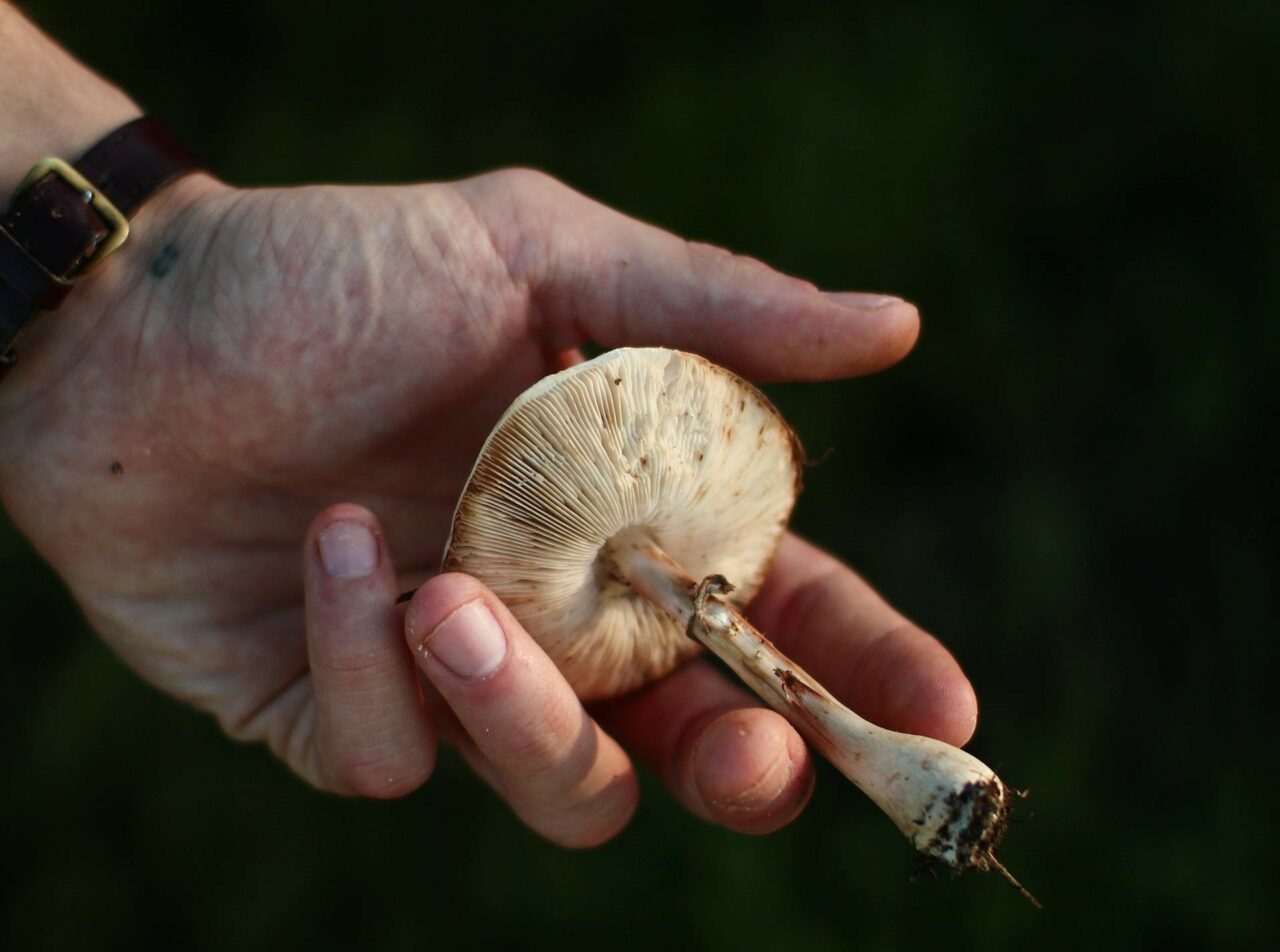Psilocybin mushrooms, similar to LSD in their function as a serotonin 5-HT2A receptor agonist, are a common form of psychedelic. Currently, they are under research for psilocybin-assisted treatments for mental health disorders, including intense emotional distress correlated with severe depression, anxiety, cluster headaches, and migraines.
To understand how shrooms can potentially alleviate these conditions, an examination of their metabolism within the body is essential. This knowledge enables both researchers and users to discern how the active compound produces psychological and therapeutic effects. This article offers a basic overview of the pharmacology and pharmacokinetics of psilocybin.
[toc]
Key Takeaways:
- Half of the psychedelic fungi ingested orally is absorbed and disseminated throughout the body.
- The alkaline phosphatase enzyme primarily conducts the dephosphorylation of the fungi compound in the liver.
- Approximately 3.4% of the compound is expelled in its original form within a day, with the rest being excreted as a stable metabolite.
What is Pharmacokinetics?
Pharmacokinetics (PK) is the scientific study of how substances, such as drugs, are processed by the body once they are introduced into the system. While it is a distinct field of study, it is closely related to pharmacodynamics, which explores how a compound interacts with the body. PK focuses on four main areas: absorption, distribution, metabolism, and excretion (ADME).
Comprehending these processes allows healthcare providers to recommend the most effective medications with the least possible risk. It also empowers them to personalize treatments according to each patient’s individual physiology and lifestyle.
How Does Pharmacokinetics Relate to Psilocybin?
Psilocybin and psilocin, the primary active compounds in certain types of magic mushrooms, have attracted significant attention from both researchers and users. Pharmacokinetics studies how the body processes mushrooms containing psilocybin and aids in understanding their potential medicinal or recreational effects.
These compounds go by various names such as “magic,” “psychedelic,” “medicinal,” or “sacred.” The fungi that contain these compounds are consumed, with The Mushroom species, their geographical origin, size, growth and drying conditions, and age can significantly alter their potency levels.
While these mushrooms naturally occur in the wild, researchers have devised ways to create synthetic versions in laboratories. Both the natural and lab-developed mushrooms exhibit low toxicity levels, although minor side effects such as nausea or vomiting may occur.
Despite these side effects, the compounds in these mushrooms show promising therapeutic potential due to their safe profile and non-addictive characteristics. These benefits have sparked interest in their use in psychotherapy, particularly for treating anxiety and depression.
Four Steps of Pharmacokinetics
Psilocybin, the primary compound in these mushrooms, is inert in its initial state but acts as a prodrug, converting into its active form, psilocin. Enzymes such as alkaline phosphatase facilitate this conversion, enabling psilocin to be absorbed and distributed throughout the body, reaching various tissues. However, following oral administration, psilocybin is not detectable in the circulatory system, feces, or urine.
Absorption
Absorption is the process by which the compound enters the bloodstream from its administration area. It determines the speed and efficiency with which the compound arrives at its target, such as the plasma. Oral administration is the most common method. Inhalation has been tried, but it is less effective than oral consumption.
The absorption process also involves the release of the compound from the dosage form during oral ingestion. Factors such as a delay in the throat or esophagus can influence this, potentially delaying the effects or causing discomfort. Once the compound reaches the stomach, the acidic environment may begin to degrade it before it enters the bloodstream.
Research on animals indicates that only about 50% of orally administered psychedelics are absorbed and distributed throughout the body.
Factors Influencing Absorption
Several factors can influence absorption, causing variations in the onset, intensity, and duration of effects:
- Stomach Content: The absorption process can be delayed if the stomach is full as it slows down the onset of effects. Conversely, an empty stomach allows for faster absorption.
- Body Fat: Substances can accumulate in fatty tissues, potentially prolonging their effects.
- Age: As we age, our metabolic rates and body composition can change.
- Zero-Order Kinetics: The substance is expelled at a steady rate, regardless of its concentration.
- First-Order Kinetics: The elimination rate is directly proportional to the drug’s concentration.
The phosphate group in psilocybin has a high polarity. This, together with the positive charge of the amine group, makes the molecule zwitterionic and increases its water solubility compared to psilocin. Without the phosphate group, psilocin becomes more lipid-soluble and metabolically available, and is more efficiently absorbed in the intestines.
class=”wp-block-heading”>How Psilocin Spreads in the BodyThe term distribution relates to how psilocin spreads within the body once it enters the bloodstream. Psilocin, being lipophilic, has the ability to cross the blood-brain barrier and reach the central nervous system.
The process of distribution is influenced by factors such as the substance’s size, polarity, and protein-binding capacity, as well as personal physiological characteristics, such as hydration levels and body composition.
The goal is to achieve a potent concentration at the targeted area. To be effective, the substance must arrive at the intended location, as specified by the volume of distribution, and remain unattached to proteins, allowing it to actively interact with its receptor.
What Affects the Distribution Process?
Several factors can influence the distribution process:
Typically, the effects begin to manifest between 20-40 minutes after ingestion, reaching a peak around 80-100 minutes. The effects of magic mushrooms usually last between 4-6 hours.
How Does Distribution to the Brain Happen?
An initial experimental study on two species showed that the order of binding affinity is 5HT2A > 5HT1A > 5HT2B [23]. It also attaches to dopamine D1, 5HT1E, 5HT5A, 5HT7, 5HT6, D3, 5HT2C, and 5HT1B receptors.
It acts as a partial agonist at the 5HT2A receptor with an efficacy of about 40%. Its psychedelic effects are attributed to its partial agonist activity at 5HT1A autoreceptors.
Experiences of mood elevation and psychotomimetic effects may be linked to the observed association between increased dopamine levels and feelings of depersonalization and joy. Hallucinogens work by modifying neurochemistry and receptor activity. It increases 5HT2A agonist activity by enhancing BDNF synthesis in the hippocampus, which promotes neurogenesis and reduces fear-related behaviors.
Elimination Process
The elimination process, or excretion, refers to how the
The human body discards substances mainly through the kidneys but also through the lungs, skin, and gastrointestinal tract. In terms of the kidneys, a naturally occurring psychedelic drug is either filtered in the glomerulus or secreted in the tubules. Some reabsorption happens, adding to the complexity of the disposal process.
The primary compound has a half-life of roughly 160 minutes, while psilocin lasts for about 50 minutes. Animal studies reveal that it is mainly excreted through urine, accounting for approximately 65% within 8 hours of consumption. Small amounts of the substance can still be detected in bile and feces.
In humans, about 3.4% of the substance is excreted in its original form within a day. The majority is expelled as psilocin-O-glucuronide, a more stable metabolite. This stability allows for the detection of the compound in urine samples over a prolonged period.
Two primary methods of substance elimination are:
Most psychedelic drugs follow the first-order kinetics method, reaching steady-state concentrations after four to five half-lives. Complete removal also occurs after four to five half-lives.
Discover Our Range of Hallucinogenic Mushrooms
The metabolic process can differ amongst various types of fungi. By purchasing from reliable online retailers like Magic Mushrooms Montreal Canada, you can avoid accidentally consuming poisonous mushrooms. Some varieties, like Agaric mushrooms, can cause powerful and unpleasant effects. Therefore, it’s essential to obtain magic mushrooms from trustworthy sources, rather than unregulated street vendors or wild foraging.
| Feature | Enigma | Full Moon Party | Gold Member | |
| Strain Type | Psilocybe Cubensis OMNI | Psilocybe cubensis (Thai Koh Samui) | Psilocybe cubensis | |
| Potency | Exceptionally high; 3.8% tryptamine content | Moderate to high potency | High potency | |
| Visual Characteristics | Resembles a blob or | Resembles a cauliflower or a brain | Typical cubensis form; of average size | Thick stems of white color; golden caramel-colored caps; visible blue bruising |
| Effects | Known to be the most potent; generates intense effects | Powerful mental high; delayed start with marked visuals | Strong visuals and euphoria |
Online Guide to Psilocybin Mushroom Usage
For medical professionals, researchers, and users, understanding the pharmacokinetics of shrooms is crucial. This knowledge equips you to make enlightened decisions about dosage and scheduling, thus reducing potential hazards.
Discover your perfect psychedelic experience at Magic Mushrooms Montreal Canada. Whether you crave a soothing trip or a deeper exploration, our extensive selection is designed to meet your specific requirements. Enjoy premium, safe, and quality-assured shrooms, negating worries about dubious sources or harmful mushrooms.
Sample the best magic mushrooms Canada has to offer and raise your psychedelic journey to new heights.
Frequently Asked Questions
Are there any known interactions between shrooms and other medications?
Our products may interact with specific medications, particularly those affecting serotonin levels, such as SSRIs (Selective Serotonin Reuptake Inhibitors). SSRIs and SNRIs (Serotonin and Norepinephrine Reuptake Inhibitors) usually lessen the effects, unlike non-serotonergic antidepressants. This reduced effect can last up to three months after discontinuing the antidepressant.
Do all psychedelics act through the same pathway as psilocybin?
No, each psychedelic compound has a unique structure that requires different metabolic processes to activate, and they connect to various receptors in the body. The way of administration also affects the absorption of each psychedelic. While the basic principles of absorption, metabolism, and distribution stay the same, the specific pathways and effects vary for each compound.
Can the form of the shroom affect its pharmacokinetics?
Yes, the form (be it fresh, powdered, or dried mushrooms) can affect the speed of absorption. For example, powdered forms might be absorbed faster than whole dried ones due to quicker dissolution.
Suggested Reads:





